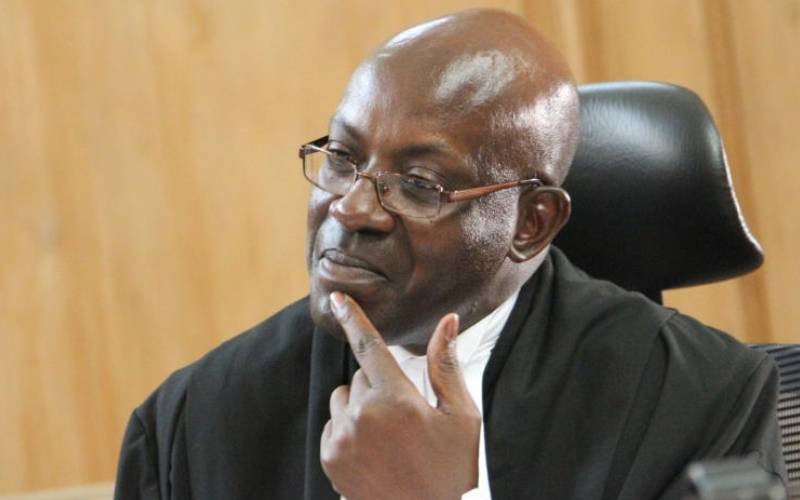
NAIROBI, KENYA: The Salaries and Renumeration Commission has confirmed it is working to trim hefty allowances paid to public servants.
SRC on Monday said the bulk of allowances paid to civil servants will be scrapped once job evaluations underway in public sector are completed.
“The issue of allowances is under discussion. We commissioned a survey in 2014 and we are still working on it,’ said SRC Vice Chairperson Daniel Ogutu, refering to contents of a report by audit firm, Deloitte, titled ‘A Study on Allowances Payable in Public Institutions in Kenya’.
Mr. Ogutu explained that SRC was working to ensure civil servants understood the new grading system before harmonising all the allowances. “We are aware of some situations where allowances are more than 40 per cent of the basic salary, which is way above the best practices. Once we are done with the unbanding of salaries, the next move is to identify allowances, which need to be scrapped," said Ogutu.
He added: "However, in the case of state officers, we have already capped allowances to below 40 per cent. But the rest of the civil service we have to discuss with their respective employers before we decide, which ones need to be retained or scrapped."
The Deloite report found 61 categories of allowances paid to civil servants, in some cases up to 10 times the basic salary. The report revealed that some of the allowances had either become redundant, were abused or duplicated.
The runaway allowances, in excess of the international best practice of not more than 40 per cent of basic salary, are partly to blame for the rising public wage bill.
Kenya's wage bill to recurrent expenditure is above 43 per cent. Together with pensions for retired public workers, the Government's salary bill now stands at Sh543.7 billion or 54 per cent of all Government revenues.
Yesterday, Clerk of the Senate Jeremiah Nyegenye, who is also the secretary of the Parliamentary Service Commission (PSC), clarified that Parliament was "fully co-operating" with SRC in job evaluations.
"The impression created that Parliament has resisted job evaluations is not correct. SRC met with Parliament and the House has been participating in the job evaluations. We have fully co-operated and the process is ongoing," said Mr Nyegenye.
The clerk further explained that the published figures for the highest paid employee in Parliament refer to the maximum pay that one can possibly get.
"A basic salary of Sh874,000 plus allowances of Sh637,600 for the senior officer in salary scale PSC 17 is the ceiling that one can possibly get after working for many years. No one is getting that kind of salary now," said Nyegenye.
A research commissioned by SRC and carried out by the Kenya Institute of Public Policy Research and Analysis (Kippra) into the public-private sector wage differentials show that allowances have the effect of doubling employee's pay and in some instances, growing it by a factor of 10.
The study revealed huge disparities in the pay structure in general and similar disparities in distribution of allowances across job groups.
Stay informed. Subscribe to our newsletter
Facilitate allowances are charged to more than one code, and in many cases lumped together with other expenses such as training and hospitality, making it difficult to track costs for individual allowances.
accounting gaps
There are gaps in accounting for facilitative allowances, usually advanced as imprest.
The report also revealed that some of the allowances were paid in compensation of forfeited purposes such as medical practitioners' non-practicing allowances, yet the doctors continued to practice.
In some training institutions, instructors' allowances were being extended to all staff even those not entitled to it.
Staff in different institutions got sitting allowances and other allowances for work that should ideally be in their job descriptions or expected of their grade; for instance, survey allowance, vessel movement, pilotage allowance, tender committee sitting allowance, task force allowance, extraneous and responsibility allowance and so on.
A key observation was that house supplementation allowance was paid to all officers housed by the security organs whether the houses were in good condition or not.
The findings also confirmed that individuals in the lowest paid job group earned comparatively least allowances and that some allowances were paid selectively.
In addition, allowances also constituted a very high proportion of gross salary across the job groups.
Such allowances include house, entertainment, transport, non-practicing and extraneous. Other in-kind benefits in the public sector include: human development/training, gratuity, pension, per diems, car loans and development loan.
The numerous allowances are used to conceal money paid out to civil servants and which form a big part of their pay.
All ministries and the presidency combined pay 17 different types of remunerative allowance payable to state officers and other public officers in the Public Service. These include State House, Cabinet Office, Directorate of Public Service Management, Ministry of Environment and Ministry of Foreign Affairs.
The parliamentary service group comprised of the National Assembly and the Senate has 12 different types of remunerative allowances including responsibility, commuter, leave, late duty, special parliamentary duty, entertainment, housing, extraneous, non-practicing, airtime, transport and domestic servant allowances.
The judicial service included the Supreme Court and Court of Appeal, High Court, Magistrate Courts, Kadhi's Court and National Council of Law Reporting.
The judicial service group has four different types of facilitative allowances including per diem, local travel, extra-duty, baggage and trainers allowances.
Again, the judicial service group has 15 different types of remunerative allowances including housing, commuter, extraneous, responsibility, acting, entertainment, uniform, hardship, risk, alimentary, special duty, transfer, non-practicing, domestic servant and annual leave allowances.
The teaching service group has eight different types of remunerative allowances including housing, responsibility, commuter, medical, hardship, transfer, special school and readers allowances.
The security organs group comprised of the Police Service (including Kenya Police Service, Administration Police Service, Directorate of Criminal Investigations Department), National Intelligence Service and Kenya Defense Forces (KDF).
This study group had the highest number of remunerative allowances payable among all the other study groups.
There are 267 state corporations in the Republic of Kenya categorised under commercial state corporations with strategic functions, executive agencies, independent regulatory agencies, research institutions, public universities, tertiary educations and training institutions.
The counties have only been operational for four years now but recorded the highest facilitative allowances in the institutions sampled.
The facilitative allowances account for 23.55 per cent of the operations and maintenance budget.
The counties spend on average 42.5 per cent of their budget on wage bill. Remunerative allowances form 35.82 per cent of the total personal emolument expenditure.
Kippra also noted that other officers are paid sitting allowance to undertake routine roles demanded by their job descriptions.
Some of the allowances are house, medical, commuter, transport, entertainment, extraneous, acting and responsibility allowances, hardship, special duty, uniforms, transfer, leave, travel and non-practicing allowances.
Further, there are multiple circulars on the same allowances where different rates are given paving way for the institutions to abuse the circulars by sampling and applying the ones with highest pay rates.
The counties are using the Muthaura Circular, SRC circular to counties and the County Assembly Board circular on salaries and allowances.
According to the report, there are instances where allowances are duplicated by use of different terminologies and names for example medical allowance and medical paid as part of salary. Medical risk allowance and risk allowance.
This duplication leads to a longer list of allowances, which impacts on the ratio of remunerative allowances to basic pay.
"Some allowances do not make financial sense in the current economic environment. Some of these allowances included inmate allowance and tent allowance whose rate is Sh40 per day, executioners allowance, hardship allowance at Sh1,200," reads the report.
It was also noted that institutions such as the teaching service have adopted different rates on hardship allowance.
Allowances payable in CBA are higher than those in circulars. The CBA over-ride the circulars. "There are cases where CBAs are involved. As you are aware a CBA is a constitutional requirement and so careful discussions are required when handling allowances payable in the CBA," said Ogutu.
Most organisations sampled did not view facilitative allowances as allowances mostly because of their mode of payment.
 The Standard Group Plc is a
multi-media organization with investments in media platforms spanning newspaper
print operations, television, radio broadcasting, digital and online services. The
Standard Group is recognized as a leading multi-media house in Kenya with a key
influence in matters of national and international interest.
The Standard Group Plc is a
multi-media organization with investments in media platforms spanning newspaper
print operations, television, radio broadcasting, digital and online services. The
Standard Group is recognized as a leading multi-media house in Kenya with a key
influence in matters of national and international interest.
 The Standard Group Plc is a
multi-media organization with investments in media platforms spanning newspaper
print operations, television, radio broadcasting, digital and online services. The
Standard Group is recognized as a leading multi-media house in Kenya with a key
influence in matters of national and international interest.
The Standard Group Plc is a
multi-media organization with investments in media platforms spanning newspaper
print operations, television, radio broadcasting, digital and online services. The
Standard Group is recognized as a leading multi-media house in Kenya with a key
influence in matters of national and international interest.









